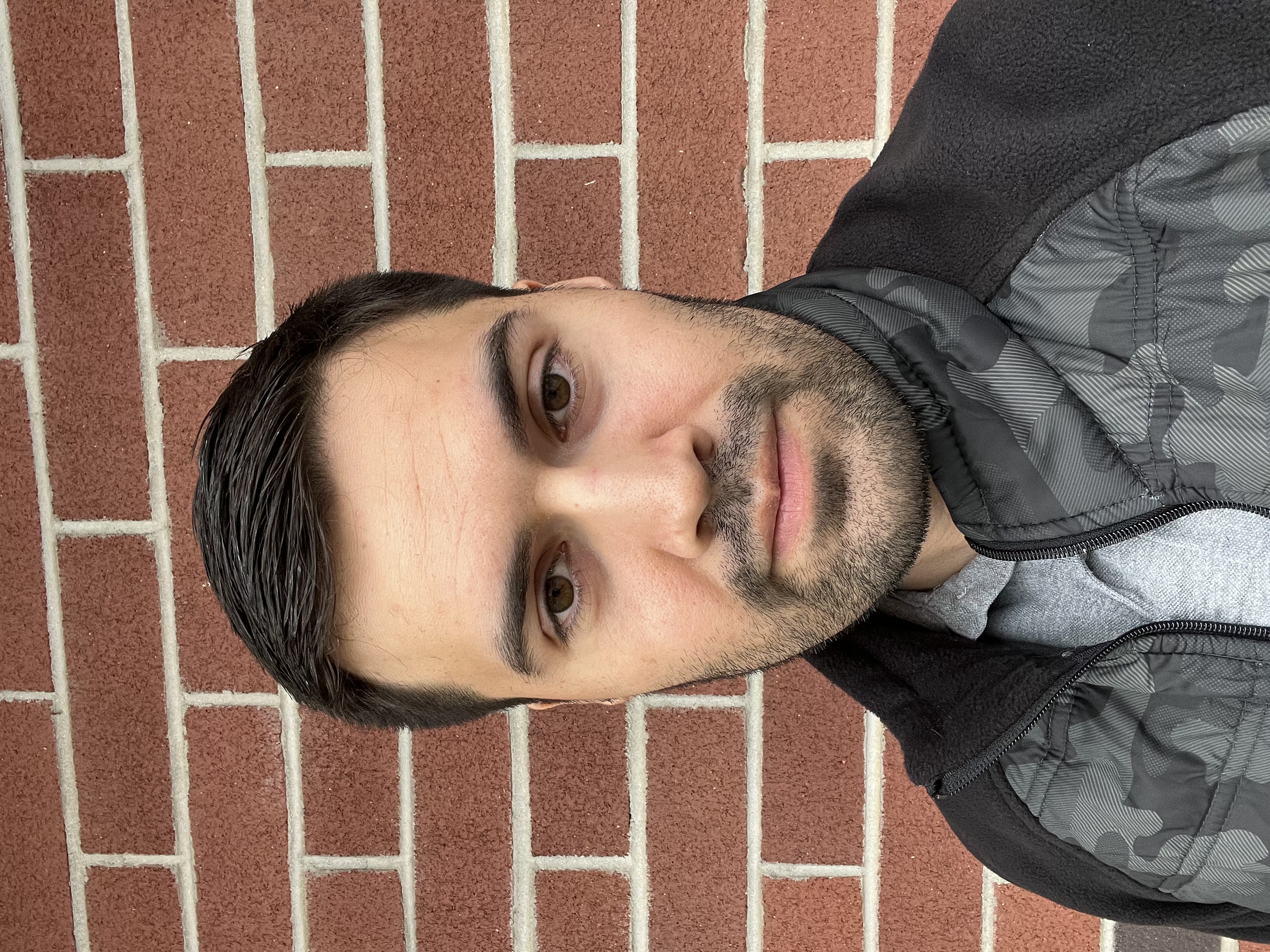Data Analysis and Deep Learning
(G-248) Deep Learning in AI Medical Imaging for Stroke Diagnosis
Thursday, October 12, 2023
9:30 AM - 10:30 AM PDT
Location: Exhibit Hall - Row G - Poster # 248

James Guzman (he/him/his)
Software Engineer, Medical Imaging
San Jose State University, Ziteo Medical
Sacramento, California, United States
Magdalini Eirinaki
Professor
San Jose State University, United States
Presenting Author(s)
Co-Author(s)
Introduction: Enhancing stroke diagnosis applications with artificial intelligence (AI) techniques that improve quantifying lesion volume, segmenting lesion location, and behaviorally “cloning” neuroradiologist clinical lesion assessment is critical in guiding patient treatment and procedure. Although AI is trained in radiologist Computer Vision (CV) tasks for skull stripping segmentation and lesion segmentation, the
Natural Language Processing (NLP) tasks are often neglected. Radiologists not only perform these visual tasks to quantify, segment and locate stroke lesions, but they also provide a textual analysis to identify the stroke type, add medical image captioning about the brain, and provide an in-depth report description about their findings, recommendations, etc. With the stroke patient cases rising and their 3D MRI data growing exponentially, the need of assisting radiologists to improve speed and accuracy in their assessments is very high. In our research, we aim to train AI models that perform visual and textual assessments on stroke cases as a radiologist would, by learning from scarcely available large clinical stroke 3D MRI datasets. To perform this research, we are working with a large number of annotated clinical MRI data of stroke patients coming from the publicly available ICPSR #38464 stroke dataset. Our overarching goal is to develop an AI stroke diagnosis system, driven by CV and NLP techniques that will assist radiologists in diagnosing strokes from MRI images, first performing skull stripping segmentation, followed by lesion segmentation, identifying the affected brain regions, and generating reports that include details such as which vascular territories affected, when were symptoms onset, etc.
Materials and Methods: For this research, we obtained access to annotated clinical MRI stroke data with metadata. This dataset is already publicly available via ICPSR [2]. However, we had to submit some paperwork for ICPSR, obtain an IRB exemption from their institution and obtain an IRB approval from our college SJSU's research foundation before we could obtain access to the ICPSR #38464 MRI stroke dataset. Then we were able to begin working on tailoring our machine learning models in our stroke diagnosis system for this dataset. As in any machine learning/deep learning system, we will employ appropriate quantitative metrics (like sensitivity, specificity, F1-score, Rand index, distances etc.), to evaluate our algorithms and models. While we did not have access to the ICPSR #38464 MRI stroke dataset until recently, we were using other datasets (NFBS, ATLAS 2.0) to perform training tasks like skull stripping segmentation and lesion segmentation. The ATLAS 2.0 dataset does not have ischemic and hemorrhagic stroke labeling. In addition, while ATLAS 2.0 includes some clinical metadata that could support image captioning, the associated radiologist reports are not available. ICPSR #38464 is a much richer, larger dataset that will help us design more robust models for NLP and CV. We plan to benchmark our NLP models against state-of-the-art NLP models (GRU, Transformers, LLMs, etc). Similarly we will evaluate our CV models against benchmarked CV 3D models (UNet, DeepMedic, DAGMNet, etc) based on published metrics and qualitative results.
Results, Conclusions, and Discussions: For determining which CV and NLP models will be in our medical imaging app for AI stroke diagnosis, we will compare their performance metrics and qualitative results. For stroke lesion segmentation, we will compare UNet, DeepMedic and DAGMNet using certain metrics such as IoU score [1]. For the image captioning, we will compare GRUs, Transformers and LLMs using metrics such as BiLingual Evaluation Understudy (BLEU) score. For the models with the best performance metrics and qualitative results, we will develop model deployment pipelines in the AI medical imaging app’s backend using Apache NiFi's Python extensibility and conversational AI control. So, when radiologists interact with the app’s Unity frontend on their device, they can use conversational commands in connection with our AI agent to request particular stroke diagnosis information from a stroke MRI case. Our AI agent will send those stroke diagnosis results through a REST API call to the Unity UI on the radiologist’s device. Ultimately, the significance of our results will be a reliable, accurate, ethical and user friendly conversational AI stroke diagnosis system that helps radiologists manage keeping up with diagnosing the exponential increase of stroke patient cases.
Acknowledgements (Optional): Thank you Dr. Magdalini Eirinaki for being my AI project advisor for my masters thesis on Deep Learning in AI Medical Imaging for Stroke Diagnosis and encouraging me to share my research in conferences, publications and with the next generation of researchers. Also thank you to my grandparents (Annie Guzman and Amado Guzman) who have both dealt with brain diseases (Dementia and Alzheimer's) and who inspired me to pursue research in a brain disease related area of AI for stroke diagnosis.
References (Optional): [1] C.-F. Liu, A. V. Faria, et al. “Deep learning-based detection and segmentation of diffusion abnormalities in acute ischemic stroke,” Commun Med, vol. 1, no. 61, 2021.
[2] C.-F. Liu, R. Leigh, B. Johnson, V. Urrutia, J. Hsu, X. Xu, X. Li, S. Mori, A. Hillis, and A. Faria, “A large public dataset of annotated clinical MRIs and metadata of patients with acute stroke” Sci Data, 10, 548 (2023), doi: 10.1038/s41597-023-02457-9
Natural Language Processing (NLP) tasks are often neglected. Radiologists not only perform these visual tasks to quantify, segment and locate stroke lesions, but they also provide a textual analysis to identify the stroke type, add medical image captioning about the brain, and provide an in-depth report description about their findings, recommendations, etc. With the stroke patient cases rising and their 3D MRI data growing exponentially, the need of assisting radiologists to improve speed and accuracy in their assessments is very high. In our research, we aim to train AI models that perform visual and textual assessments on stroke cases as a radiologist would, by learning from scarcely available large clinical stroke 3D MRI datasets. To perform this research, we are working with a large number of annotated clinical MRI data of stroke patients coming from the publicly available ICPSR #38464 stroke dataset. Our overarching goal is to develop an AI stroke diagnosis system, driven by CV and NLP techniques that will assist radiologists in diagnosing strokes from MRI images, first performing skull stripping segmentation, followed by lesion segmentation, identifying the affected brain regions, and generating reports that include details such as which vascular territories affected, when were symptoms onset, etc.
Materials and Methods: For this research, we obtained access to annotated clinical MRI stroke data with metadata. This dataset is already publicly available via ICPSR [2]. However, we had to submit some paperwork for ICPSR, obtain an IRB exemption from their institution and obtain an IRB approval from our college SJSU's research foundation before we could obtain access to the ICPSR #38464 MRI stroke dataset. Then we were able to begin working on tailoring our machine learning models in our stroke diagnosis system for this dataset. As in any machine learning/deep learning system, we will employ appropriate quantitative metrics (like sensitivity, specificity, F1-score, Rand index, distances etc.), to evaluate our algorithms and models. While we did not have access to the ICPSR #38464 MRI stroke dataset until recently, we were using other datasets (NFBS, ATLAS 2.0) to perform training tasks like skull stripping segmentation and lesion segmentation. The ATLAS 2.0 dataset does not have ischemic and hemorrhagic stroke labeling. In addition, while ATLAS 2.0 includes some clinical metadata that could support image captioning, the associated radiologist reports are not available. ICPSR #38464 is a much richer, larger dataset that will help us design more robust models for NLP and CV. We plan to benchmark our NLP models against state-of-the-art NLP models (GRU, Transformers, LLMs, etc). Similarly we will evaluate our CV models against benchmarked CV 3D models (UNet, DeepMedic, DAGMNet, etc) based on published metrics and qualitative results.
Results, Conclusions, and Discussions: For determining which CV and NLP models will be in our medical imaging app for AI stroke diagnosis, we will compare their performance metrics and qualitative results. For stroke lesion segmentation, we will compare UNet, DeepMedic and DAGMNet using certain metrics such as IoU score [1]. For the image captioning, we will compare GRUs, Transformers and LLMs using metrics such as BiLingual Evaluation Understudy (BLEU) score. For the models with the best performance metrics and qualitative results, we will develop model deployment pipelines in the AI medical imaging app’s backend using Apache NiFi's Python extensibility and conversational AI control. So, when radiologists interact with the app’s Unity frontend on their device, they can use conversational commands in connection with our AI agent to request particular stroke diagnosis information from a stroke MRI case. Our AI agent will send those stroke diagnosis results through a REST API call to the Unity UI on the radiologist’s device. Ultimately, the significance of our results will be a reliable, accurate, ethical and user friendly conversational AI stroke diagnosis system that helps radiologists manage keeping up with diagnosing the exponential increase of stroke patient cases.
Acknowledgements (Optional): Thank you Dr. Magdalini Eirinaki for being my AI project advisor for my masters thesis on Deep Learning in AI Medical Imaging for Stroke Diagnosis and encouraging me to share my research in conferences, publications and with the next generation of researchers. Also thank you to my grandparents (Annie Guzman and Amado Guzman) who have both dealt with brain diseases (Dementia and Alzheimer's) and who inspired me to pursue research in a brain disease related area of AI for stroke diagnosis.
References (Optional): [1] C.-F. Liu, A. V. Faria, et al. “Deep learning-based detection and segmentation of diffusion abnormalities in acute ischemic stroke,” Commun Med, vol. 1, no. 61, 2021.
[2] C.-F. Liu, R. Leigh, B. Johnson, V. Urrutia, J. Hsu, X. Xu, X. Li, S. Mori, A. Hillis, and A. Faria, “A large public dataset of annotated clinical MRIs and metadata of patients with acute stroke” Sci Data, 10, 548 (2023), doi: 10.1038/s41597-023-02457-9
